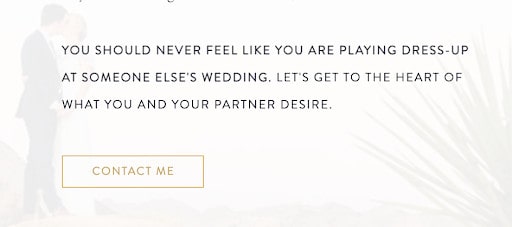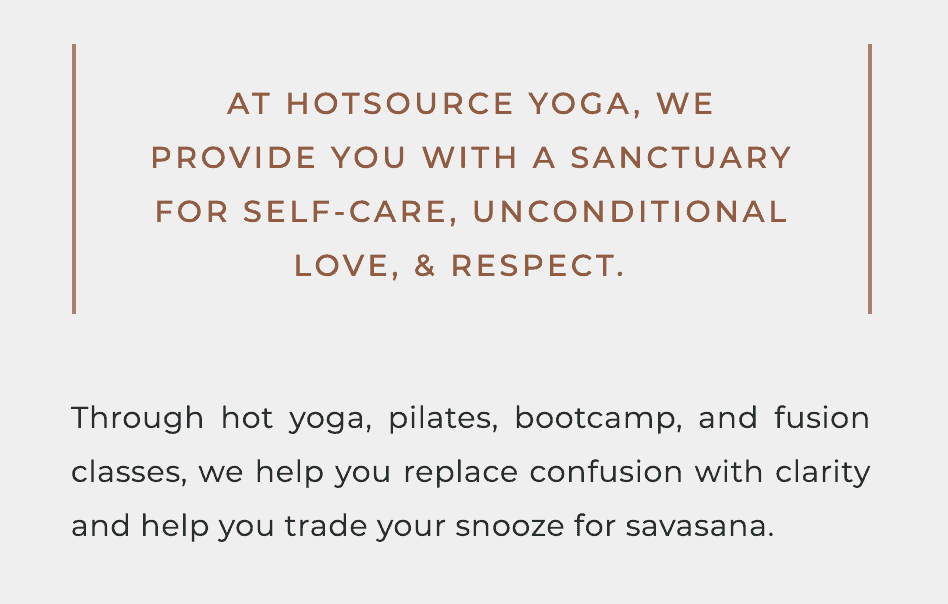Business, Creative Entrepreneurs, Interior Designers, Photographers, SEO, Tips & Tricks, Website Design, Wedding Professionals
If someone were to ask you about the purpose of your business, would you be able to give them a concise explanation?
You might find yourself giving a long answer with a few tangential thoughts mixed in, if you’re anything like me.
Many of us find it easy to talk about why we love our work, but most people who are meeting us for the first time are asking this question to quickly see if we can help them.
When this is the case, a well-crafted mission statement can be a game-changer.
Instead of stumbling over our words to come up with a succinct response, a mission statement gives our audience a clear idea of who we are, who we like to help, and how we help them.
Let’s break down those three essential parts so you can create the best mission statement for your business.
The 3 essential parts of an impactful mission statement
Ideally, your mission statement should be one or two sentences long. It may seem impossible right now now to narrow it down, but I’ll give you some tips and tricks along the way.
Let’s start with the first part.
Who you are
Now this may seem like a lofty question to answer, but your mission is less of an identity statement and more of a definition of who you are in relation to your audience. Are you an educator, a coach, a trainer, a freelancer, or something else entirely?
First, ask yourself what you want to be known for and what you have expertise in. If you have a niche already picked out, this will also come in handy. When you’re able to communicate who you are, you’ll be able to convince your audience why they should care.
In addition to defining who you are, you might also want to include your title. This is a great way to introduce yourself and tell your audience exactly what they can expect from you. It also establishes your expertise and gives you more credibility.
As a business owner, you don’t have to ask anyone’s permission on what to call yourself. Too many entrepreneurs get a bad case of imposter syndrome when they think about what their title is. My best advice is to silence your inner critic and move forward with a title that feels like a fantastic fit.
For example, if you’re a business coach, you could use titles like this:
- CEO & Founder
- Business Coach & Marketing Expert
- Lead Business Coach
- Senior Business Coach
- Chief Business Coach
- Business Coach & Strategist
- Business Coach & Consultant
- Freelance Business Coach
You can use these same titles to describe your own role based on your industry or niche. Just promise me you won’t talk yourself out of a title that feels tailor-made for you!
And one more thing — try not to give yourself a title that feels overly clever. Instead, it should clearly describe what you do. Instead of calling yourself a “professional wordsmith,” call yourself a copywriter or content writer. See what I mean? Clarity is key!
Who your audience is
Now that you can fully explain who you are, the next step is to understand who your ideal audience is. This doesn’t need to describe everyone who comes to your website — rather, it should help you identify who your dream clients are.
The more you understand exactly who you want to work with, the easier it will be to connect with them. That’s the whole point of your mission statement, anyway!
It might help to start by defining your audience’s demographics. This refers to common factors like your audience’s age range, gender, location, marital status, education level, average income, and more. This will create the first part of your ideal client profile, but it’s only the start.
Next, you’ll want to understand your audience’s psychographics. This is where the magic happens! With psychographics, you’ll discover how your ideal audience thinks, which is hugely helpful when you create messaging to sell your offerings.
To get started, here are a few questions you can ask to uncover who your ideal audience is:
- Who do I feel called to help? Who do I naturally gravitate towards?
- Do I have experience working with people in a specific industry?
- What common traits do these people share?
- What does their ideal day look like?
- What are their habits?
- What motivates them?
- What kind of problems do I help people solve?
- Who usually experiences those problems?
If you’re not sure how to find this information, you can either survey your audience members, conduct a few personal interviews, or even answer these questions based on your favorite clients. Once you find what these people have in common, you’ll be able to move forward with the last part of your mission statement.
What you offer them
Now that you know who you are and who your audience is, it’s time to decide what you are going to offer them.
Before you can create compelling offers, you must first understand the problems your audience is experiencing. These pain points help you connect the dots between their hang-ups and your potential solutions. These solutions can be turned into products and services your audience will love.
For example, a business coach might offer 1:1 coaching sessions in addition to a group program on a topic they’re an expert in. They could even sell digital products like affordable digital workbooks and journaling prompts that help their audience experience more of their brand.
By offering services and products at various price points, you’ll be able to convert more audience members. I follow this same strategy since I offer an introductory Simple Showit SEO course, along with my template customization and custom Showit website design and copywriting packages.
Another way to think about what you are going to offer your ideal audience is to consider what your specializations are in. This is especially helpful for consultants and freelancers who offer a range of services but want to show what they’re specifically trained in or known for.
No matter which route you take, it should be clear from reading your mission statement that you offer solutions that are perfectly suited to your ideal client or buyer.
Just think… in one simple statement, you’ll be able to qualify your leads and determine who’s a good fit to work with. Sounds dreamy, right?!
Before we wrap up, let’s see some examples we can pull inspiration from!
6 mission statement examples you’re going to love
What better way to get inspiration for your own mission statement by looking at real examples? There are so many different ways you can craft a mission statement, and these examples highlight some of my favorite statements from past clients.
No matter your industry or what you want to be remembered for, you can create a unique mission statement that effortlessly tells the story of your brand. To help you get started and open your mind to new possibilities, here are a few mission statements you’re sure to love.

Mission statement as highlighted on Crossed Keys Estate’s homepage, written by me!

Mission statement as highlighted on Bloom & Grow Radio’s About page.

Mission statement as highlighted on Melanie Anne Photography’s homepage.

Mission statement as highlighted on Moxie Bright Events’ homepage, written by me!

Mission statement as highlighted on Providence Vineyard’s About page.

Mission statement as highlighted on Hotsource Yoga’s homepage.
